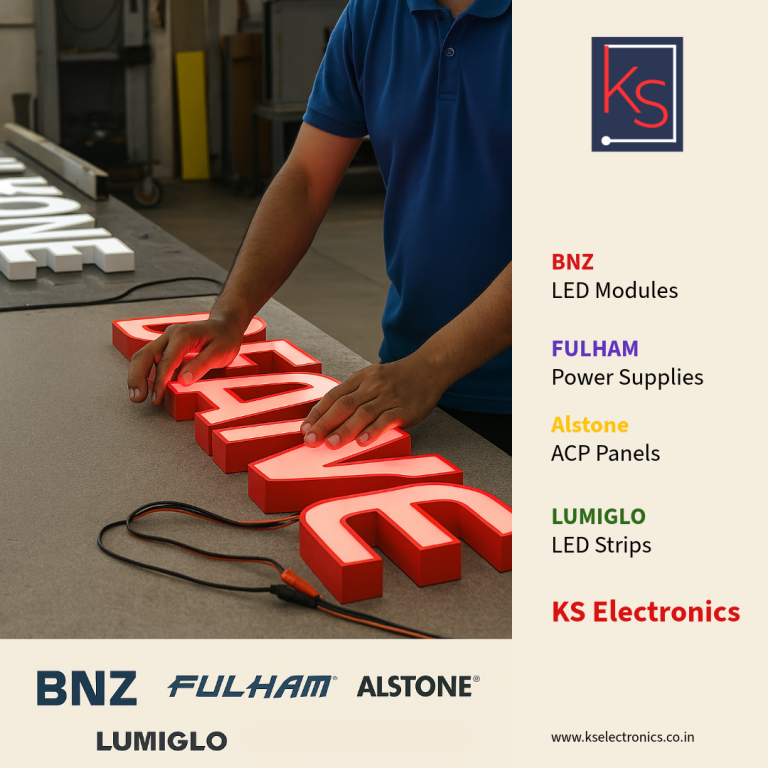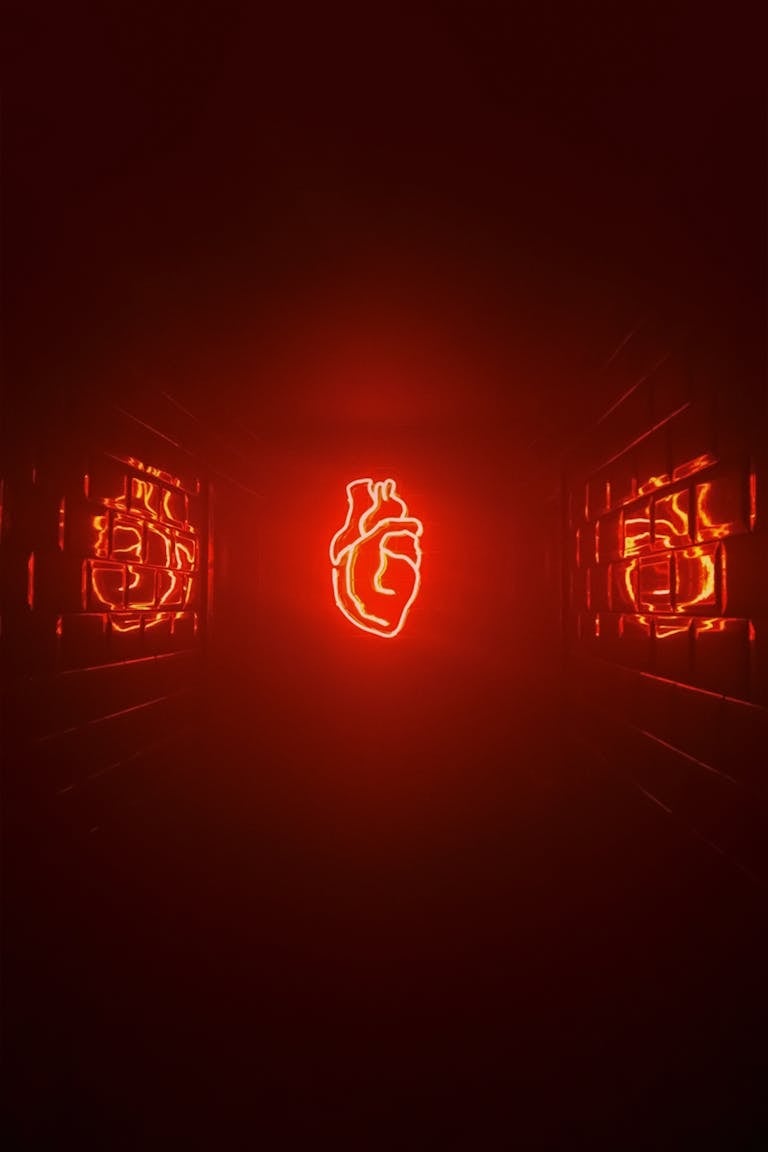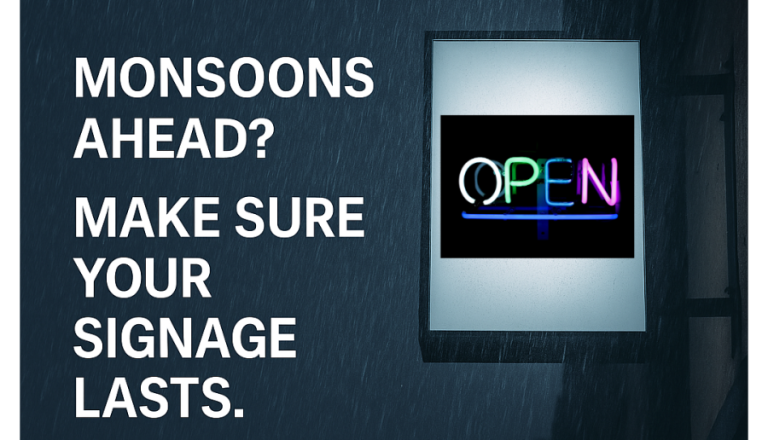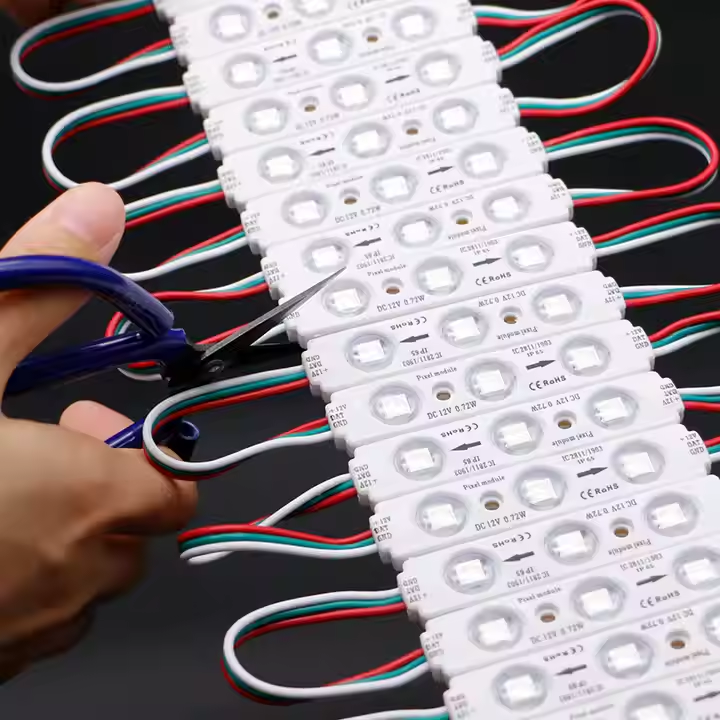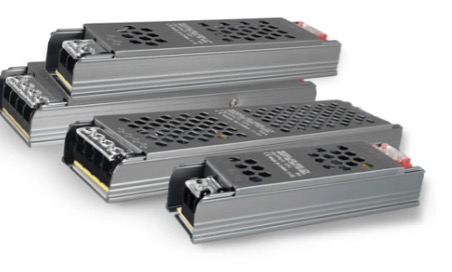LED Strips for Custom Signage
Best Solutions for Retail, Hospitality, Education & Entertainment
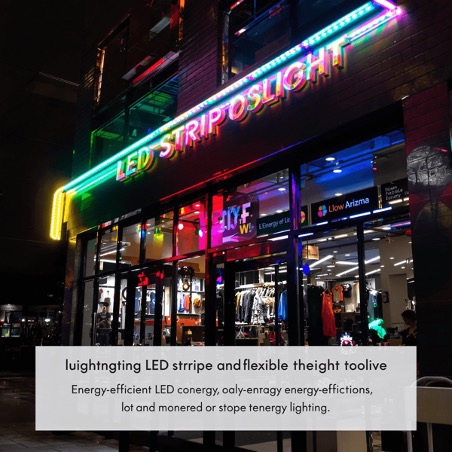
LED strip technology has changed the game in the custom signage industry, turning boring static displays into eye-catching dynamic visual experiences. These flexible lighting solutions are now widely used in retail stores, hotels, schools, and entertainment venues.
Why choose LED strip signage? Here are some key benefits:
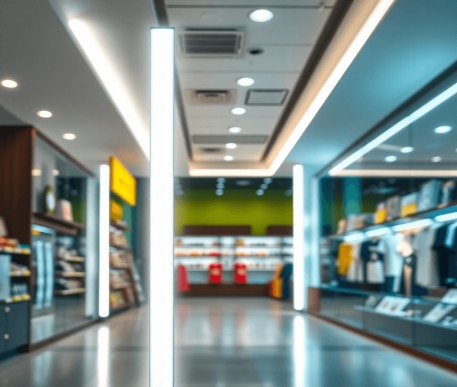
- Energy efficient: Uses up to 80% less power
- Long-lasting: Can last over 50,000 hours
- Bright and clear: Offers exceptional brightness and visibility
- Easy to install: Flexible installation options available
- Customizable: Choose from different colors and programmable effects
- Low maintenance: Requires minimal upkeep
More and more businesses are using LED strips for their signs because they want affordable ways to grab people’s attention and get their message across. You’ll see these innovative lights brightening up storefront displays, creating immersive entertainment spaces, guiding visitors on school campuses, and making hotel stays more enjoyable.
With modern LED technology, you have complete control over how bright the lights are, what color temperature they emit, and what dynamic effects they can create. Whether you want subtle background lighting or bold displays that demand attention, LED strips give you the flexibility to achieve your signage goals. They’re tough, energy-efficient, and versatile – making them the perfect choice for businesses that want to leave a lasting impression while keeping their operations running smoothly.
Understanding LED Strips and Their Role in Signage

LED strips are a flexible lighting solution made up of small light-emitting diodes (LEDs) attached to either flexible or rigid circuit boards. These strips come in various types:
- Standard Flexible Strips: Perfect for curved surfaces and complex designs
- High-Brightness Strips: Ideal for outdoor signage and well-lit environments
- RGB/RGBW Strips: Capable of displaying multiple colors and dynamic effects
- COB (Chip on Board) Strips: Offering seamless light distribution
- Waterproof Strips: Designed for outdoor applications
The Structure of LED Strips
LED strips consist of the following components:
- PCB Base: Houses the electrical connections
- LED Chips: Available in different sizes (3528, 5050, 2835)
- Protective Coating: Shields against environmental factors
Advantages of LED Strips in Signage
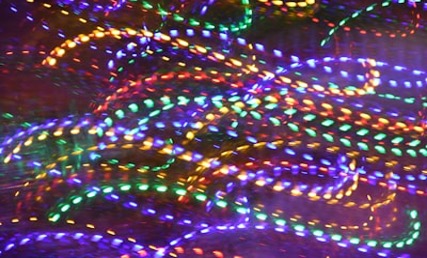
LED strips have several advantages over traditional lighting solutions when it comes to signage:
- Flexibility: Bend around corners and conform to unique shapes
- Customizable Length: Cut-to-size options at marked intervals
- Energy Efficiency: Up to 90% less power consumption
- Heat Management: Minimal heat output during operation
- Color Accuracy: Precise color reproduction for brand consistency
- Dimming Capabilities: Adjustable brightness levels
- Long Lifespan: 50,000+ hours of operation
Choosing Between LED Modules and Strips
The decision between using LED modules or strips depends on the specific requirements of your project. If you need seamless illumination and design flexibility, LED strips are the way to go. On the other hand, if you require focused light output for specific applications, LED modules would be more suitable.
Custom LED Signage Solutions Across Industries
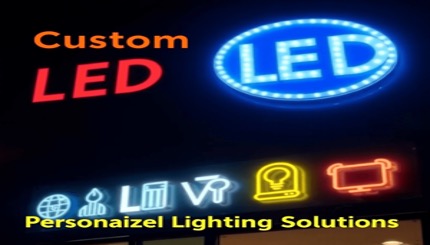
Custom LED signage is changing the way brands are seen in various industries with its personalized lighting solutions. Each industry has specific needs, such as how bright the signs should be or if they can be programmed, to create one-of-a-kind visual experiences for their intended audiences.
Programmable LED Solutions
- Real-time content updates
- Dynamic message displays
- Scheduled brightness adjustments
- Color-changing capabilities
- Interactive display options
Industry-Specific Applications

- Retail: Digital price tags, window displays
- Corporate: Reception area signage, conference room schedules
- Healthcare: Patient information, wayfinding systems
- Transportation: Arrival/departure boards, emergency notifications
The flexibility of LED sign board lighting allows businesses to craft unique brand experiences. Custom lighting for signs can work in harmony with current systems, enabling effortless control through mobile apps or centralized management systems.
Key Features for Business Applications
- Brightness control for different times of day
- Weather-resistant options for outdoor installations
- Energy-efficient operation modes
- Remote management capabilities
- Multiple mounting options
Signage lighting for businesses now includes smart features like motion sensors and ambient light detection. These advanced abilities assist organizations in maintaining optimal visibility while lowering energy use and operating expenses.
The ability to program commercial LED signage opens up new opportunities for presenting dynamic content. Businesses can plan out different messages throughout the day, react to real-time events, or create captivating visual displays that grab attention and encourage interaction.
1. Retail Sector Applications

LED strips have transformed retail spaces by introducing eye-catching displays that attract customers and increase sales. Retailers use these flexible lighting options in various ways:
- Window Displays: Bright, color-changing LED strips highlight merchandise and create seasonal themes
- Product Shelving: Strategic accent lighting draws attention to featured items
- Brand Signage: Custom LED solutions showcase logos and brand messages with striking clarity
- Point-of-Purchase: Interactive displays guide customers to promotional items
The energy efficiency of LED technology translates to significant cost savings for retail operations. A typical LED strip consumes 75% less power than traditional lighting while lasting up to 50,000 hours.
Retailers can program LED displays to:
- Change colors based on time of day
- Sync with music for immersive shopping experiences
- Display different brightness levels for various promotions
- Create dynamic light patterns that capture customer attention
Smart controls allow store managers to adjust lighting schemes remotely, ensuring consistent brand presentation across multiple locations while optimizing energy usage during peak and off-peak hours.
2. Hospitality Sector Applications

LED strip lighting transforms hospitality spaces into sophisticated, welcoming environments. Hotels and restaurants leverage LED technology to create distinctive atmospheres that leave lasting impressions on guests.
Lobby Displays and Event Information
- Digital welcome signs with customizable messages
- Real-time event schedules and conference room availability
- Interactive wayfinding displays for guest navigation
- Dynamic menu boards for restaurants
Architectural Lighting Applications
- Accent lighting for reception areas and corridors
- Backlit panels highlighting brand elements
- Color-changing façade illumination
- Mood lighting in dining spaces and lounges
LED strips enable hospitality venues to adapt their lighting schemes for different occasions. Hotels can program lighting patterns for weddings, corporate events, or seasonal celebrations. Restaurants use dimmable LED strips to transition from bright lunch service to intimate dinner ambiance.
The integration of smart controls allows staff to adjust lighting settings through mobile devices, ensuring optimal illumination levels throughout the day. These systems can synchronize with building management software to maximize energy efficiency while maintaining the desired aesthetic appeal.
3. Education Sector Applications
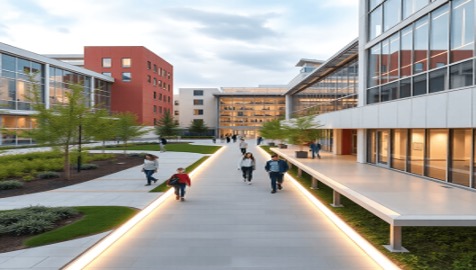
Educational institutions face unique challenges in guiding students, staff, and visitors through sprawling campus layouts. LED strip signage offers practical solutions that transform campus navigation and communication systems.
Key Applications in Education:
- Digital directory boards at building entrances
- Classroom number displays with scheduling information
- Emergency notification systems
- Library hour indicators
- Cafeteria menu boards
- Sports facility announcements
LED strips provide schools with energy-efficient alternatives to traditional signage, reducing operational costs while maintaining bright, clear displays. The durability of indoor LED signage ensures minimal maintenance requirements – a crucial factor for budget-conscious educational institutions.
Schools can integrate LED strips into their existing infrastructure to create:
- Color-coded directional systems
- Dynamic announcement boards
- Interactive learning displays
- Adaptive lighting for different activities
The flexibility of LED technology allows educational facilities to update information instantly, ensuring students and faculty stay informed about schedule changes, campus events, and important announcements. These systems prove particularly valuable during orientation periods and special events when clear navigation becomes essential for new visitors.
Moreover, the integration of LED strips into signage can significantly enhance the effectiveness of directional systems, making it easier for newcomers to familiarize themselves with the campus layout.
4. Entertainment Sector Applications

The entertainment industry transforms spaces into captivating experiences through LED strip technology. Theme parks create immersive storytelling environments with programmable LED displays that sync with music and sound effects. Theaters use RGB LED strips to produce dynamic stage lighting effects, enhancing performances and creating mood-setting ambiance.
Video walls powered by LED technology deliver high-impact visual experiences in:
- Concert venues
- Sports arenas
- Nightclubs
- Gaming centers
- Movie theaters
Outdoor entertainment venues require specialized LED solutions:
- IP67-rated waterproof strips for outdoor digital billboards
- High-brightness modules for daylight visibility
- Impact-resistant housing for durability
- Temperature-resistant components for extreme weather
LED architectural lighting transforms building facades into dynamic canvases for:
- Light shows
- Brand activations
- Festival displays
- Interactive installations
The entertainment sector leverages LED strip technology to create memorable experiences through vibrant colors, synchronized displays, and weather-resistant outdoor applications that capture audience attention and enhance venue aesthetics.
Technical Considerations for Effective LED Signage Implementation
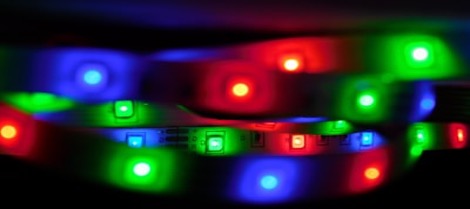
Outdoor LED signage is constantly exposed to rain, snow, dust, and temperature changes. To effectively protect against these environmental challenges, it is crucial to use waterproof LED strips with IP67 or IP68 ratings. These ratings indicate the level of water resistance provided by the LED strips:
- IP67: Protection from temporary water immersion
- IP68: Protection from continuous water submersion
The durability of LED signage depends on several factors:
- Housing materials: Aluminum or PVC enclosures shield internal components from external elements
- Sealant quality: Silicon-based compounds are used as sealants to prevent moisture infiltration
- Connection points: Weatherproof connectors are employed to maintain circuit integrity and prevent damage from moisture
- Temperature resistance: The operating range of -20°C to +60°C ensures that the LED signage functions properly in various weather conditions
Proper waterproofing measures are essential for outdoor LED displays as they directly impact their lifespan, maintenance costs, and performance in challenging weather conditions. By implementing effective waterproofing techniques such as using high-quality sealants and weatherproof connectors, the longevity of outdoor LED displays can be significantly increased.
Furthermore, it is important to consider the effects of sun exposure on LED signage. Over time, prolonged exposure to sunlight can cause yellowing and degradation of the LED strips. To combat this issue, it is recommended to use UV-resistant materials in the design of outdoor LED strips. These materials will provide added protection against harmful UV rays and help maintain the appearance and functionality of the signage over time.
Installation Best Practices for Long-lasting Performance

Professional LED signage installation requires careful attention to detail for optimal performance. Here are essential practices to ensure your LED strip signs stand the test of time:
- Clean Surface Preparation: Remove dust, oil, and debris from mounting surfaces before installation
- Proper Power Distribution: Calculate and provide adequate power supply across all LED segments
- Heat Management: Install heat sinks where needed and maintain proper spacing between strips
- Secure Mounting: Use appropriate mounting clips, adhesives, or channels designed for LED strips
- Cable Management: Organize and protect wiring with proper conduits and strain relief
- Testing Protocol: Verify all connections and perform thorough testing before final assembly
- Documentation: Record installation details, including wiring diagrams and power requirements
Professional installers should follow manufacturer guidelines and local electrical codes while implementing these practices. Regular maintenance checks help identify potential issues early, extending the life of your LED signage investment.
Future Trends Shaping the Landscape of LED Strip Signage Solutions

The LED strip signage industry is experiencing rapid technological advancement, bringing exciting innovations to commercial applications:
1. AI-Powered Content Management
- Smart algorithms adapt display content based on audience demographics
- Real-time analytics optimize messaging effectiveness
- Automated scheduling and content rotation
2. Interactive Touch-Free Solutions
- Gesture control capabilities for contactless interaction
- Motion-sensing displays that respond to viewer presence
- Voice-activated content changes
3. Sustainable Technology Integration
- Solar-powered LED systems for outdoor signage
- Smart energy management with automatic brightness adjustment
- Recycled materials in strip manufacturing
4. Enhanced Customization Features
- Pixel-level control for ultra-precise animations
- Advanced color mixing capabilities
- Integration with IoT devices for synchronized displays
The rise of 5G connectivity enables faster data transmission, allowing for real-time content updates and seamless remote management of LED signage networks across multiple locations.
Conclusion
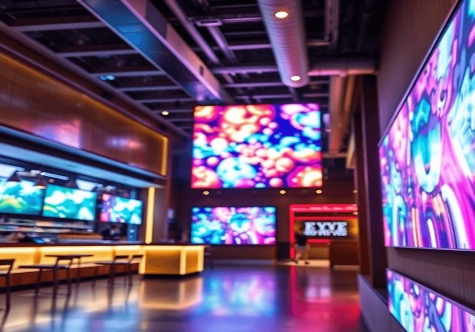
LED strip signage is changing the way businesses communicate visually in industries like retail, hospitality, education, and entertainment. These flexible lighting solutions offer:
- Energy-efficient operation with lower maintenance costs
- Dynamic content display capabilities for real-time updates
- Custom branding opportunities through RGB color control
- Enhanced customer engagement with interactive features
By using LED strip technology in custom signage, businesses can create memorable experiences while also enjoying practical benefits. This includes better visibility, lower operating costs, and happier customers. As LED technology continues to improve, there are even more possibilities for innovative and effective signage applications. This makes LED strips a must-have tool for meeting today’s visual communication needs.
FAQs (Frequently Asked Questions)
Frequently Asked Questions – LED Strip Signage Solutions
1. What are the key benefits of using LED strips in custom signage solutions?
LED strips provide versatility, high brightness, and energy efficiency, making them ideal for creating impactful and modern signage. They are widely used across industries like retail, hospitality, education, and entertainment due to their adaptability and visual appeal.
2. How do flexible and high-brightness LED strips enhance signage applications?
- Flexible LED strips enable creative and customized designs that can conform to various shapes and surfaces.
- High-brightness LED strips ensure excellent visibility and attention-grabbing appeal, especially in high-traffic environments like retail stores, events, and entertainment venues.
3. In what ways can custom LED signage be tailored for different industries?
Custom LED signage can be:
- Programmed for changing messages or visuals.
- Designed to match brand-specific colors, fonts, and styles.
- Adapted in terms of size, brightness, and interactivity to meet sector-specific needs, whether it’s informational signage in education or atmospheric lighting in hospitality.
4. Why is waterproofing important for outdoor LED strip signage?
Waterproofing ensures that outdoor signage remains durable and weather-resistant. This is crucial for maintaining performance and brightness in environments exposed to rain, humidity, or dust, such as billboards, outdoor displays, and venue signage.
5. What installation best practices should be followed for long-lasting LED strip signage?
- Engage professional installation teams.
- Use proper mounting techniques and sealing for waterproofing.
- Ensure correct electrical connections and power supply matching.
- Follow all safety and compliance standards to enhance lifespan and performance.
6. What future trends are shaping commercial LED strip signage solutions?
Emerging trends include:
- Programmable RGB LED strips for dynamic, animated content.
- Integration with smart control systems (e.g., IoT and mobile apps).
- Enhanced energy-efficient technologies.
These innovations are enabling more interactive, cost-effective, and brand-personalized signage solutions across industries.

